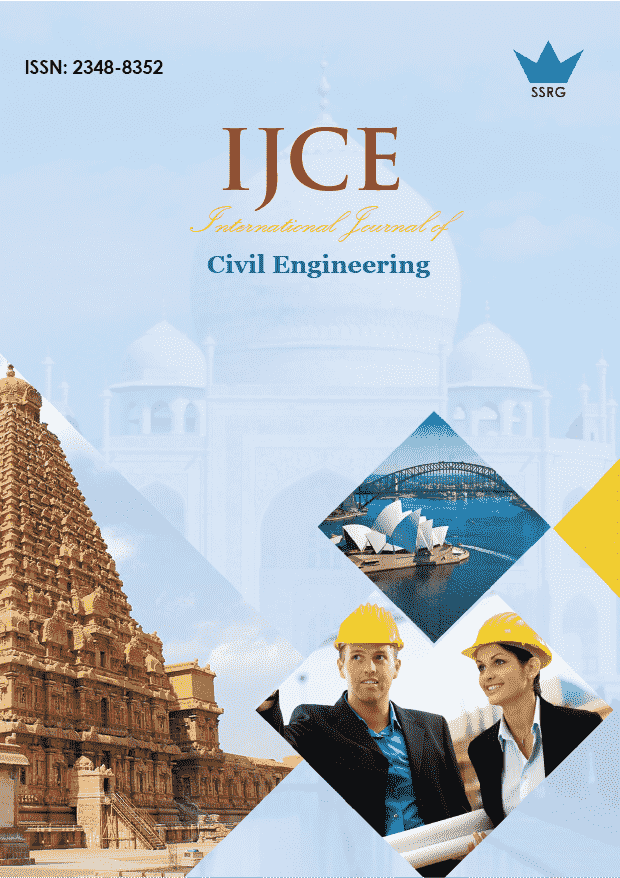Multiple Attribute Decision-Making Methods Helps in Logically Selection of Concrete Masonry Units

| International Journal of Civil Engineering |
| © 2021 by SSRG - IJCE Journal |
| Volume 8 Issue 4 |
| Year of Publication : 2021 |
| Authors : Satish Kumar Jain |
How to Cite?
Satish Kumar Jain, "Multiple Attribute Decision-Making Methods Helps in Logically Selection of Concrete Masonry Units," SSRG International Journal of Civil Engineering, vol. 8, no. 4, pp. 5-13, 2021. Crossref, https://doi.org/10.14445/23488352/IJCE-V8I4P102
Abstract:
Concrete Masonry Unit (CMU) is one of the most important building materials used in the construction of walls in place of traditional clay bricks. These CMU are available in various sizes, shapes, and specifications with minor changes. Crushing strength, water absorption, rates, fire-resistant, and many other properties are very important, which are kept in mind while selecting CMU. Engineers, architects, contractors, and owners face problems in making the right choice of CMU so that the quality and economy can be maintained in work. The wrong choice of CMU may lead to bad quality and high cost of the work. Multiple Attribute Decision Making (MADM) methods have been used in many fields of engineering for making the best choice among the available alternatives with minor variations. This paper demonstrates the use of the Simple Additive Weighting (SAW) method, Weighted Product Method (WPM), Analytic Hierarchy Process (AHP), and its version and Technique for Order Preference by Similarity to Ideal Solution (TOPSIS) in a combination of AHP in the selection of CMU. It is established in this study that these methods are logical and simple in use, rank the alternatives similarly, and can be used successfully for the best choice of CMU.
Keywords:
Concrete Masonry Unit, Compressive strength, Porosity, Fire rating, Decision-making methods, SAW, WPM, AHP, TOPSIS.
References:
[1] Rao R. V., Decision making in the manufacturing environment, Springer-Verlag London Limited, 2007.
[2] Jee D. H., and Kang K. J., A method for optimal material selection aided with decision-making theory. Mater DES: 21(3)(2000) 199-206.
[3] Rao R. V. and Patel B. K., A subjective and objective integrated multiple attribute decision-making methods for material selection, Materials and Design, Elsevier, 31(2010) 4738-4747.
[4] Karsak E. E., Distance-based fuzzy MCDM approach for evaluating flexible manufacturing system alternatives, International Journal of Production Research, 40(2002) 3167-3181.
[5] Karsak E.E., Kuzgunkaya O., A fuzzy multiple objective programming approach for the selection of a flexible manufacturing system, International Journal of Production Economics, 79(2002) 101-111.
[6] Rao R. V., and Parnichkun, M., Flexible manufacturing system selection using a combinatorial mathematics-base decision-making method, International Journal of Production Research, 47(24)(2008) 6981-6998.
[7] Yurdakul M., AHP as a strategic decision-making tool to justify machin too selection, Journal of Materials Processing Technology, 146(2004) 365-376.
[8] Kulatilaka N., Valuing the flexibility of flexible manufacturing systems, IEEETrans. Eng. Manage., 35(1988) 250-257.
[9] Troxler J. W., Estimating the cost impact of flexible manufacturing, J. Cost Manage., 4(1990) 26-35.
[10] Tseng M. C., Strategic choice of flexible manufacturing technologies, International Journal of Production Economics, 91(2004) 223-227.
[11] Chtourou H., Masmoudi W., and Maalej A., An expert system for manufacturing systems machine selection, Expert Systems with Applications, 28(2005) 461-467.
[12] Djassemi M. A., Simulation analysis of factors influencing the flexibility of cellular manufacturing, International Journal of Production Research, 43(2005) 2101-2111.
[13] Behzadiab M., Kazemzadeh R. B., Albadvi A., and Aghdassi M., PROMETHEE: A comprehensive literature review on methodologies and applications, Europian Journal of Operational Research. Doi: 10.1016/j.ejor.2009.01.021, (2009) 198-215.
[14] Rao R. V. and. Patel B. K, Decision making in the manufacturing environment using an improved PROMETHEE method,” International Journal of Production Research. Doi: 10.1080/00207540903049415, (2009) 1-18.
[15] Albayrakoglu M., Justification of new manufacturing technology: a strategic approach using the analytical hierarchy approach, Production and Inventory Management Journal, 37(1)(1996) 71-77.
[16] Bayazit O., Use of AHP in design making for flexible manufacturing systems, Journal of Manufacturing Technology Management, 16(7)(2005) 808-819.
[17] Rao R. V. and Padmanabhan K. K., Rapid prototyping process selection using graph theory and matrix approach, Journal of Materials Processing Technology, 194(2007) 81-88.
[18] Rao R. V., Evaluating flexible manufacturing systems using a combined multiple attribute decision-making method, International Journal of Production Research, Doi:10.1080/00207540601011519, 46(7)(2006) 1975-1989.
[19] Fisherburn P. C., Additive utilities with incomplete product set: application to priorities with the analytical hierarchy process, Operations Research Society of America, Baltimore, 1967.
[20] Edwards W., Newman J. R., Snapper K., and Seaver D., Multiattribute Evaluation, SAGE Publications, Newbury Park, California, 1982.
[21] Satty T. L., Fundamentals of decision making and priority theory with AHP, Pittsburg, PA: RWS Publications, 2000,
[22] Barzilai J. and Lootma F. A., Power relations and group aggregation in the multiplicative AHP and SMART. In Proc. of the 3rd International Symposium on the AHP, Georgr Washington University, Washington.

 10.14445/23488352/IJCE-V8I4P102
10.14445/23488352/IJCE-V8I4P102